10 Types of Cryptocurrencies Compared
The rise of crypto assets has given people more options when it comes to storing value. Simply defined, these are assets that exist purely in a digital state with their value coming from supply and demand rather than external market forces.1
Think critically about any crypto project’s assets and assess its viability by registering for The MIT Media Lab Cryptocurrency course.
They are segregated into four distinctive categories: cryptocurrencies, platform tokens, utility tokens, and transactional tokens. According to Allied Market research, cryptocurrency’s market share was valued at $1.49 billion in 2020. By 2030, this value is projected to reach $4.94 billion, growing at a compound annual growth rate (CAGR) of 12.8% from 2021.2
Due to the vast number of cryptocurrency types, we have ordered this guide according to market capitalization values – as this is generally one of the main ways to rate the value of cryptocurrencies.3
Considering the above, the top 10 cryptocurrencies are currently:
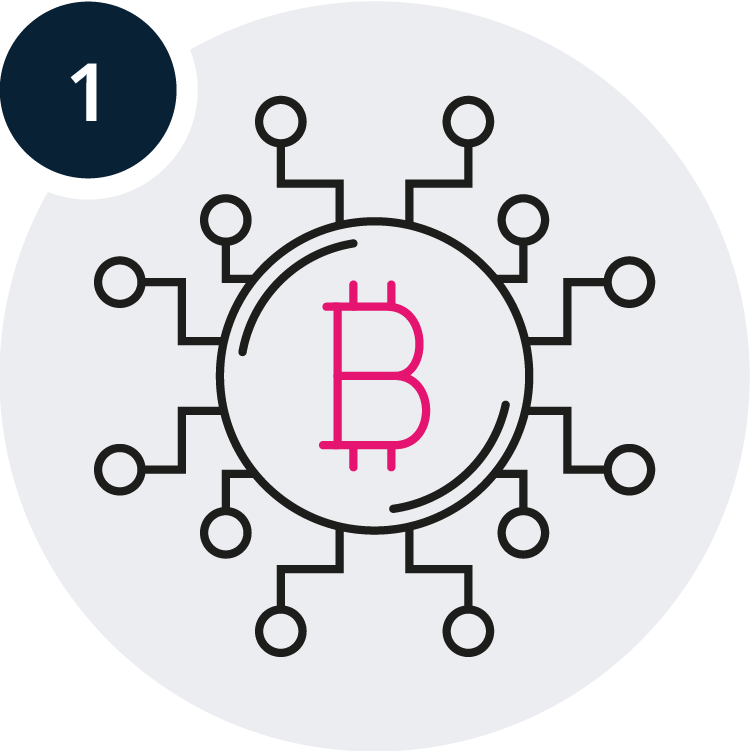
Bitcoin (BTC)4
The first major usable cryptocurrency. It has the highest market cap and its coins trade at the highest cost of all cryptocurrencies.
Market worth: $744,586,622,967
- 1MB block size
- Transactions take about 10 minutes to process5
- Token limit of 21 million with 83 percent of its tokens already in circulation6
- Slow processing speeds
- High energy usage
- High transaction fees
- No-counterparty assets (value determined by market dynamics)7
- Decentralized platform
- Concerns about scalability of this platform led to the incorporation of SegWit2x8 – this helps make the amount of verifiable data per block smaller and includes signature data as an extended block instead
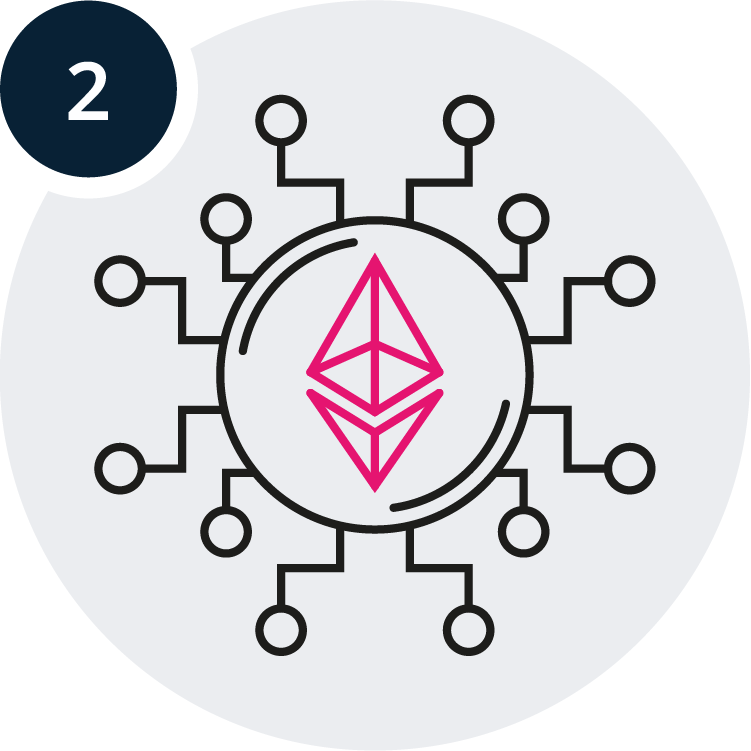
Ethereum (ETH)9
A decentralized, open-source blockchain with smart contract functionality. Ether (ETH or Ξ) is the native cryptocurrency of the platform.
Market worth: $313,588,368,238
- Token limit of 18 million per year
- Currently has over 119.7 million tokens in circulation10
- Is a decentralized blockchain platform
- Specializes in ’smart contracts’ that facilitate the exchange of value
- Coded programs run without third-party interference
- Users must use tokens to perform actions on the blockchain, this forces them to mainly stick to financial actions
- In February 2022, Wormhole, one of the most popular bridges linking the Ethereum and Solana blockchains, lost about $320 million in an apparent hack11
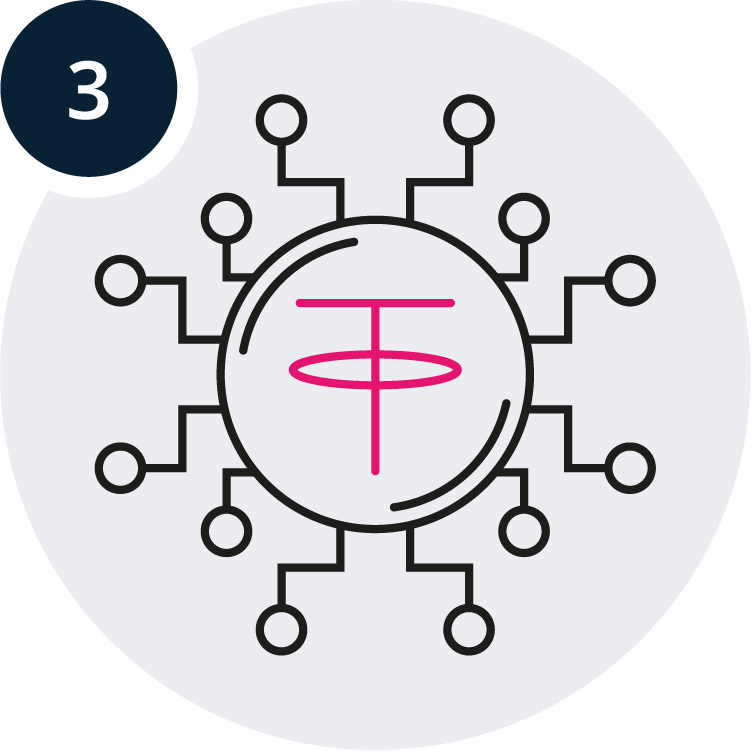
Tether (USDT)12
A blockchain-based cryptocurrency backed by the U.S. dollar, which means actual dollars are in reserves at financial institutions to serve as collateral.
Market worth: $80,050,765,034
- No limit on tokens
- Converts your digital money into traditional money13
- Carries counterparty risk, there is a possibility that a party can default on their contractual obligations
- Popular as traders use them as a substitute for U.S. dollars
- Tokens are designed to be stable for volatile cryptocurrency markets
- Highly traded currency
- Low transaction fees14
- It was recently involved in a controversy, where it was issuing more tether tokens than it has dollars in the bank15
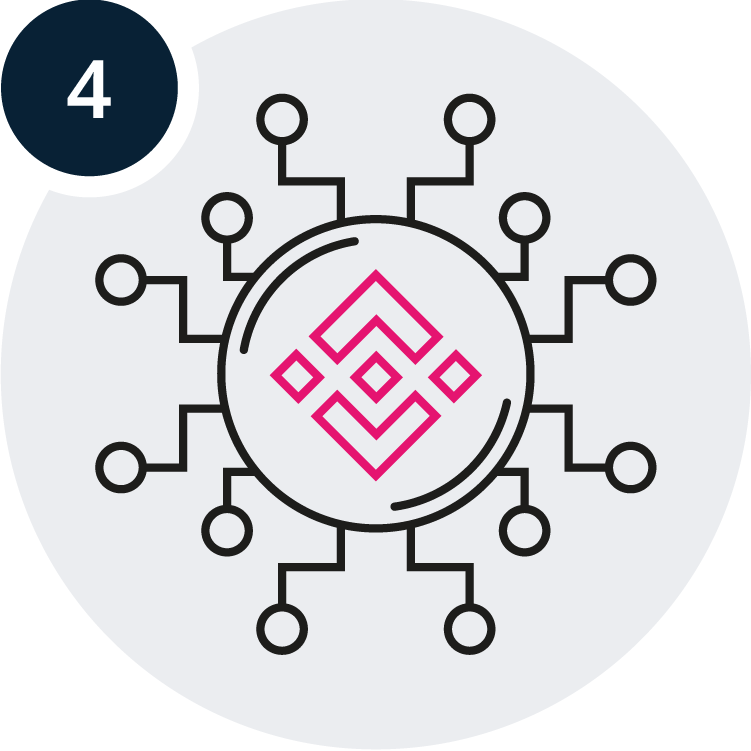
BNB (BNB)16
Issued by Binance exchange and the largest cryptocurrency exchange in the world, supporting more than 1.4 million transactions per second.
Market worth: $63,926,241,179
- Launched in July 2017
- Initially based on the Ethereum network but is now the native currency of Binance’s own blockchain (the Binance chain)
- Limited to 200 million BNB tokens17
- As of September 2021, 168,137,036 are in circulation18
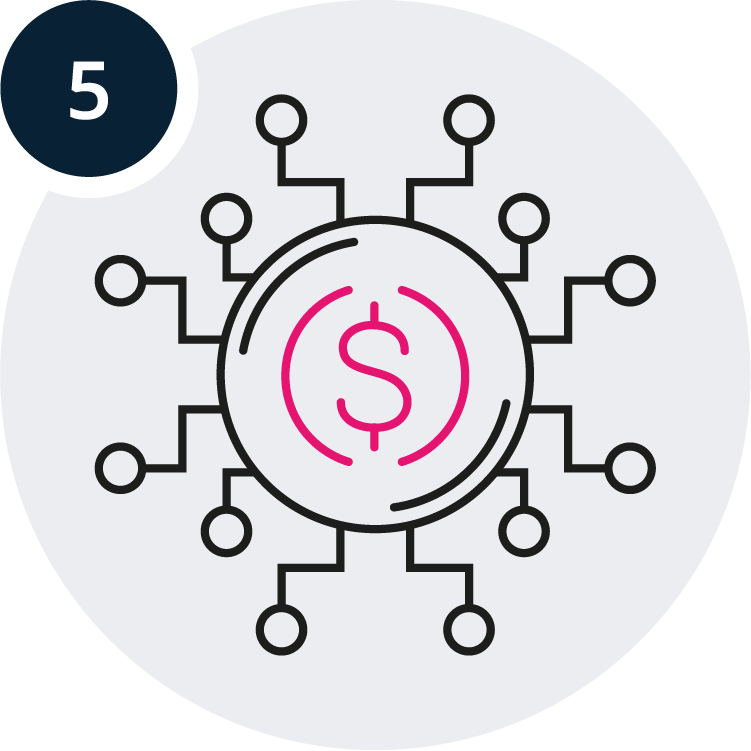
USD Coin (USDC)19
A type of cryptocurrency that is referred to as a stablecoin. You can always redeem 1 USD Coin for US$1.00, giving it a stable price.
Market worth: $52,477,290,116
- Eligible customers can earn rewards for every USD Coin they hold
- USD Coin is able to move globally from a client’s crypto wallet to other exchanges, businesses, and people.
- Is regulated by U.S. financial institutions and commonly backed by reserved assets20 (or dollar-dominated assets like Treasury securities)
- USDC generally matches the value of the U.S. dollar, without experiencing the volatility seen in non-stable coins, such as Bitcoin and Ethereum21
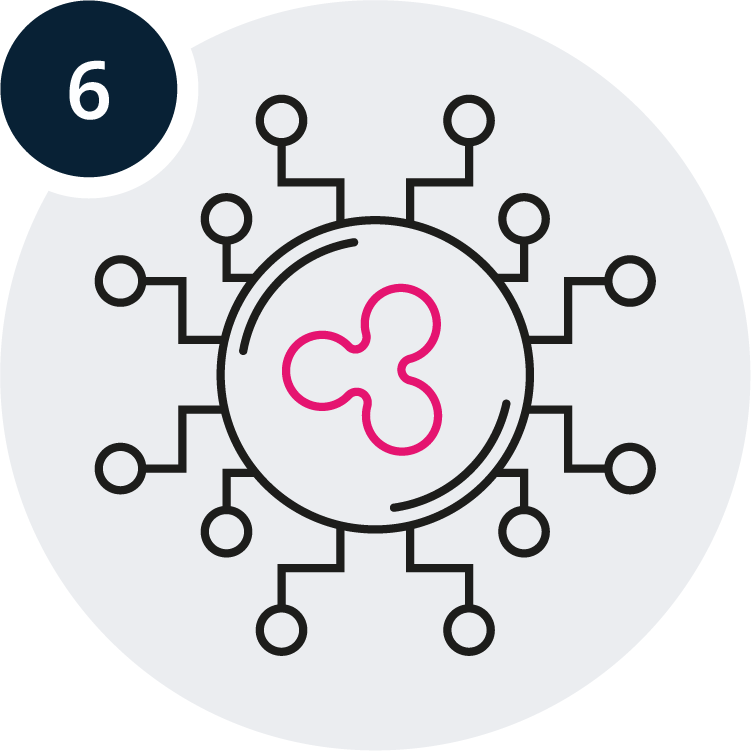
Ripple (XRP)22
The native cryptocurrency of XRP Ledger, which is an open-source, public blockchain.
Market worth: $36,052,578,516
- Token limit of 100 billion, with current circulation sitting around 50 billion23
- No-counterparty assets (value determined by market dynamics)
- Decentralized exchange on the XRP Ledger24
- Can create customizable tokens
- Escrow feature allows a user to set a conditional exchange on the XRP Ledger, until a date or condition is met – the XRP is inaccessible
- High processing capacity
- Extremely fast transaction settlement speed of five seconds25
- Uses less energy than Bitcoin, Ether, or Visa
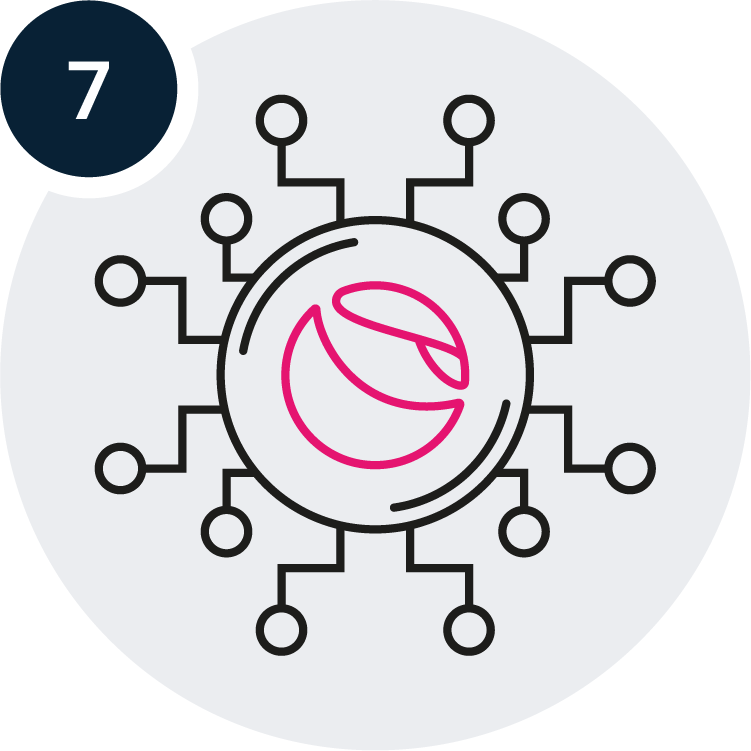
Terra (LUNA)26
An open source stablecoin network controlled by its stakeholders.
Market worth: $35,671,464,686
- Created by start-up Terraform Labs and its co-founders Do Kwon and Daniel Shin in 2018
- Uses fiat-pegged stablecoins to leverage the benefits of cryptocurrency at the same time as taking advantage of the day-to-day price stability of fiat currencies
- Offers incentives to LUNA holders to swap LUNA and stablecoins at profitable exchange rates at their discretion, ensuring supply always matches demand
- E-commerce platforms from 10 separate countries, with a member base of 45 million27
- Grew over 14,700 percent in 202128
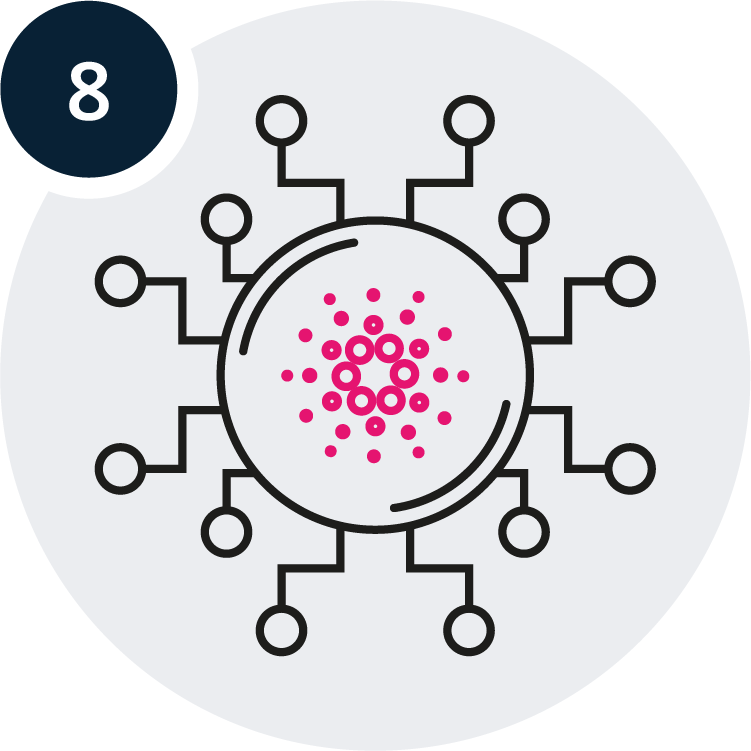
Cardano (ADA)29
A third-generation, decentralized proof-of-stake (PoS) blockchain platform designed to be a more efficient alternative to proof-of-work (PoW) networks.30
Market worth: $28,666,644,319
- Named after Ada Lovelace, a 19th-century countess and English mathematician who is recognized as the first computer programmer
- Cardano founder Charles Hoskinson was on the team that founded Ethereum with inventor Vitalik Buterin31
- More sustainable than cryptocurrencies such as Bitcoin, which makes it more environmentally friendly, faster and more secure32
- Token maximum of 45 million ADA with a current circulation of about 31 billion33
- Founded on peer-reviewed research and evidence-based methods34
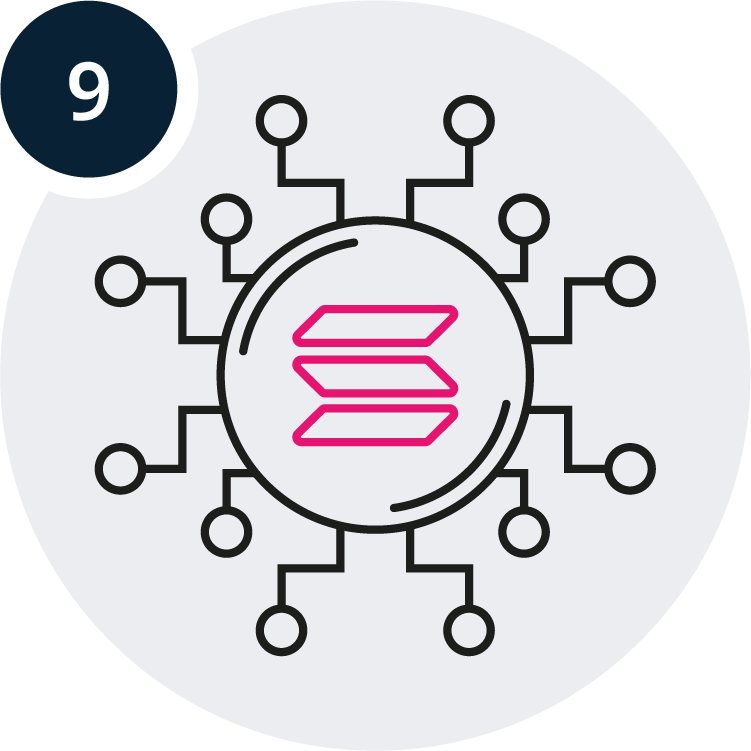
Solana (SOL)35
A proof-of-stake cryptocurrency with smart contract capabilities, including DeFi dApps and NFTs.
Market worth: $28,478,693,083
- 65,000 transactions a second with near-zero fees
- Claims that fast transaction speeds are achieved by forgoing decentralization
- The current total token supply is 504,095,110 SOL, with a circulating supply of 296,693,628 SOL
- No fixed maximum supply – instead a fixed inflation rate year-on-year is in place36
- Grew by 12,000 percent in 2021 with a market capitalization of over $66 billion
- There are currently 260 million tokens in circulation, with a total of 489 million tokens planned for release into circulation37
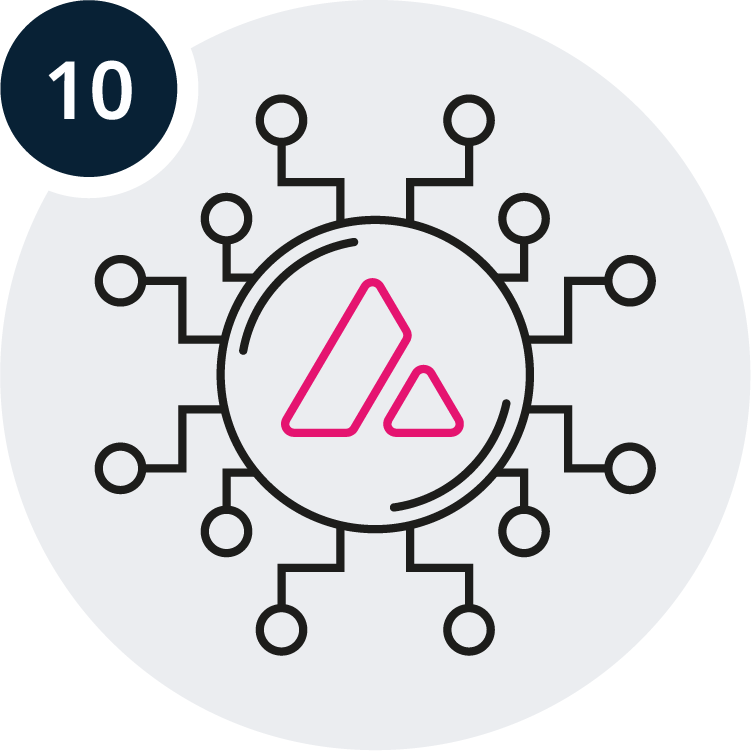
Avalanche (AVAX)38
A cryptocurrency and blockchain platform that provides near-instant transaction finality.
Market worth: $20,954,827,433
- Fast, scalable, and able to communicate with other blockchains
- People are assigned blocks to mine based on the number of tokens they hold39
- 270 million tokens are currently in circulation40
- A maximum supply of 720 million tokens exist
- In September 2021, Avalanche held a token sale that raised $230 million in funds for development41
- Operates at an internet-scale owing to its three blockchains working under one layer protocol – this increases the number of transactions exponentially42
- AVAX holders can control the rate of new coin creation by voting to adjust the amount of AVAX that is paid as a reward for adding a new block to the Avalanche blockchain43
The advent of blockchain technologies has led to the age of digital assets and currencies. The different types of cryptocurrencies serve to alleviate the red tape and fees associated with traditional currencies, and with financial innovations becoming more common, these continue to grow in popularity. As these digital assets evolve, the potential of this disruptive technology seems to be limitless. It’s clear that whether traditional monetary systems survive the threat of disruption or not, crypto assets are becoming global fixtures.
If you would like to gain an in-depth understanding of crypto assets and harness the potential they offer, explore the selection of fintech and blockchain courses online.
- 1 Chohan, U. (Jan, 2022). ‘Cryptocurrencies: A Brief Thematic Review’. Retrieved from SSRN.
- 2 Goswami, A., et al. (Jul, 2021). ‘Cryptocurrency Market Outlook – 2030’. Retrieved from Allied Market Research.
- 3 Goswami, A., et al. (Jul, 2021). ‘Cryptocurrency Market Outlook – 2030’. Retrieved from Allied Market Research.
- 4 Reiff, N. (Feb, 2022). ‘Bitcoin vs. Ethereum: What’s the difference?’ Retrieved from Investopedia.
- 5 (Mar, 2022). ‘What is the maximum size of a bitcoin block?’ Retrieved from Supply Chain Game Changer.
- 6 Prathap, M. (Dec, 2021). ‘Nearly 90% of all Bitcoin has already been mined – here’s how its limited supply has driven up its value’. Retrieved from Business Insider.
- 7 (Oct, 2021). ‘Opinion: Cryptocurrency exchanges and counterparty risk’. Retrieved from Funds Europe.
- 8 Reiff, N. (Feb, 2022). ‘SegWit2x.’ Retrieved from Investopedia.
- 9 Reiff, N. (Feb, 2022). ‘Bitcoin vs. Ethereum: What’s the difference?’ Retrieved from Investopedia.
- 10 Sephton, C. (Feb, 2022). ‘How many ethereum (ETH) are there?’ Retrieved from Currencycom.
- 11 Sigalos, M. (Feb, 2022). ‘More than $320 million stolen in latest apparent crypto hack’. Retrieved from CNBC.
- 12 Zhang, B. (Jan, 2022). ‘What is Tether and is it a good investment?’ Retrieved from Go Banking Rates.
- 13 Singh, A. (Oct, 2021). ‘Can cryptocurrency be converted into cash? Read on to find out’. Retrieved from NDTV Profit.
- 14 Lopatto, E. (Aug, 2021). ‘The Tether controversy, explained’. Retrieved from The Verge.
- 15 Lopatto, E. (Aug, 2021). ‘The Tether controversy, explained’. Retrieved from The Verge.
- 16 Frakenfield, J. (Aug, 2021). ‘Binance Coin (BNB)’. Retrieved from Investopedia.
- 17 (Mar, 2022). ‘Binance coin – BNB’. Retrieved from Cleartax.
- 18 Godbole, O. (Jan, 2022). ‘Binance destroys 1.6M BNB tokens in first-ever auto burn’. Retrieved from CoinDesk.
- 19 (Nd). ‘A cryptocurrency with a stable price.’ Retrieved from Coinbase. Accessed March 7, 2022.
- 20 Picardo, E. (Feb, 2022). ‘USD Coin’. Retrieved from Investopedia.
- 21 (Mar, 2022). ‘USD Coin’. Retrieved from The Economic Times.
- 22 (Mar, 2022). ‘XRP’. Retrieved from CoinDesk.
- 23 Reiff, N. (Jul, 2021). ‘Bitcoin vs. Ripple: What’s the difference?’ Retrieved from Investopedia.
- 24 (Nd). ‘XRPL today and the vision for tomorrow’. Retrieved from XRP Ledger. Accessed March 7, 2022.
- 25 Daly, L. (Feb, 2022). ‘What is Ripple?’ Retrieved from The Motley Fool.
- 26 Locke, T. (Dec, 2021) ‘Terra is “hot among the cool kids right now” as its token Luna hit an all-time high. Here’s what investors should know’. Retrieved from CNBC Make It.
- 27 Farooqui, J. (Nov, 2021). ‘Terra (Luna): Everything you need to know about the alt-coin’. Retrieved from Proactive.
- 28 (Feb, 2022). ‘Why LUNA beat Bitcoin and could be the next big thing’. Retrieved from Business Tech.
- 29 (Nov, 2020). ‘Cardano (ADA) facts’. Retrieved from BTC Turk.
- 30 Conway, L. (Aug, 2021). ‘Cardano (ADA). Retrieved from Investopedia.
- 31 Daly, L. (Jan, 2022). ‘7 Things to know before you buy Cardano (ADA)’. Retrieved from The Ascent.
- 32 (Nd). ‘The 28 most sustainable cryptocurrencies for 2022’. Retrieved from LeafScore. Accessed March 11, 2022.
- 33 Tripathi, Y. (Apr, 2021). ‘How many Cardano coins are there in the world? Know details here’. Retrieved from Republic World.
- 34 (Mar, 2022). ‘How high can Cardano (ADA) go?’ Retrieved from Benzinga.
- 35 Conway, L. (Feb, 2022). ‘What is Solana?’ Retrieved from Blockworks.
- 36 Barsby, O. (Sep, 2021). ‘Solana max supply: does Solana have a hard cap?’ Retrieved from Planet Crypto.
- 37 Picardo, E. (Dec, 2021). ‘Solana (SOL)’. Retrieved from Investopedia.
- 38 Reiff, N. (Feb, 2022). ‘Avalanche (AVAX)’. Retrieved from Investopedia.
- 39 (Mar, 2022). ‘Avalanche (AVAX)’. Retrieved from Forbes.
- 40 (Nd). ‘Avalanche (AVAX)’. Retrieved from CoinGecko. Accessed March 7, 2022.
- 41 Ahmadi, A. (Feb, 2022). ‘The investor’s guide to Avalanche (AVAX)’. Retrieved from Blockworks.
- 42 Fogle, D. (Jan, 2022). ‘Avalanche (AVAX) crypto: What it is, what it’s worth and should you be investing?’ Retrieved from Go Banking Rates.
- 43 Reiff, N. (Feb, 2022). ‘Avalanche (AVAX)’. Retrieved from Investopedia.